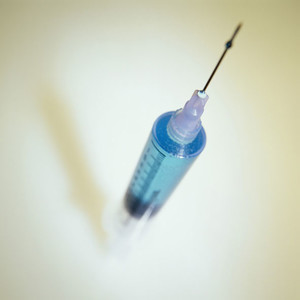The results of non-clinical and phase I clinical assessments of a candidate biosimilar rituximab (PF-05280586) have shown similarity, with respect to in vivo, functional characteristics and pharmacokinetic and pharmacodynamic properties, of the biosimilar (PF-05280586) and its reference product, Roche’s rheumatoid arthritis blockbuster MabThera/Rituxan (rituximab).
MabThera/Rituxan is a chimeric monoclonal antibody (mAb) against the protein CD20, which is primarily found on the surface of immune system B cells. The drug destroys B cells and is therefore used to treat diseases which are characterized by excessive, overactive or dysfunctional B cells. Such diseases include rheumatoid arthritis, leukaemia and non-Hodgkin’s lymphoma (a group of cancers arising from lymphocytes or white blood cells).
Pharma giant Pfizer presented the results of the study at the 2013 American College of Rheumatology (ACR)/Association of Rheumatology Health Professionals (ARHP) Annual Meeting in San Diego, US, which was held on 26–30 October 2013 [1].
In the non-clinical studies side-by-side comparisons of peptide maps showed the similarity of PF-05280586 compared to MabThera, indicating amino acid identity between the two mAbs. The dose-response curves of the two mAbs in the complement-dependent cytotoxicity (CDC) and antibody-dependent cell cytotoxicity (ADCC) assays were essentially superimposable indicating similar in vitro function. Similarly, the binding to FcγRIIIa (158V) of PF-05280586 coincided with that of MabThera, indicating similar mechanisms of actions of the two mAbs.
The ongoing phase I/II trial of the monoclonal antibody biosimilar is being carried out in 220 patients with active rheumatoid arthritis on a background of methotrexate who have had an inadequate response to one or more TNF antagonist therapies. Participants have been randomized into three arms to receive two 1,000 mg intravenous treatments of PF-05280586, MabThera or Rituxan. Monitoring for safety by an independent committee has shown no safety signals so far. The trial is expected to be completed in the fourth quarter of 2013.
The non-clinical similarity exercise confirms that the candidate biosimilar rituximab (PF-05280586) shows in vitro structural and functional similarity to the reference medicinal product. The biosimilars candidate and MabThera/Rituxan also appear to be well tolerated in non-clinical and clinical studies.
In the European Union, the patent on MabThera expired on 12 November 2013, whereas in the US the patent on Rituxan will only expire on 22 September 2016 [2]. Global sales of MabThera/Rituxan for 2012 were US$7.2 billion, making it a lucrative target for biosimilars developers.
Related articles
Phase I study shows equivalence of biosimilar rituximab and MabThera
Development of biosimilars for rheumatology
References
1. da Silva A. Target-directed development of a proposed biosimilar Etanercept, GP2015: comparability of in vitro target binding and pre-clinical efficacy and pharmacokinetics. American College of Rheumatology (ACR)/Association of Rheumatology Health Professionals (ARHP) Annual Meeting, San Diego, US, 26-30 October 2013. Abstract:#1736.
2. GaBI Online - Generics and Biosimilars Initiative. US$67 billion worth of biosimilar patents expiring before 2020 [www.gabionline.net]. Mol, Belgium: Pro Pharma Communications International; [cited 2013 Dec 6]. Available from: www.gabionline.net/Biosimilars/General/US-67-billion-worth-of-biosimilar-patents-expiring-before-2020
Permission granted to reproduce for personal and non-commercial use only. All other reproduction, copy or reprinting of all or part of any ‘Content’ found on this website is strictly prohibited without the prior consent of the publisher. Contact the publisher to obtain permission before redistributing.
Copyright – Unless otherwise stated all contents of this website are © 2013 Pro Pharma Communications International. All Rights Reserved.
Source: ACR, ClinicalTrials.gov








 0
0











Post your comment